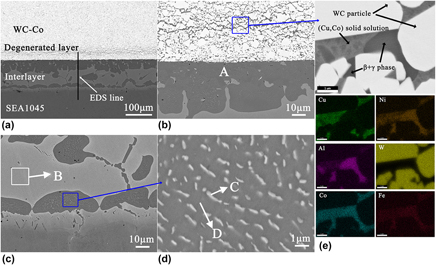Crossref Citations
This article has been cited by the following publications. This list is generated based on data provided by
Crossref.
Liu, Guiwu
Zhang, Xiangzhao
Yang, Jian
and
Qiao, Gunjun
2019.
Recent advances in joining of SiC-based materials (monolithic SiC and SiCf/SiC composites): Joining processes, joint strength, and interfacial behavior.
Journal of Advanced Ceramics,
Vol. 8,
Issue. 1,
p.
19.
Ahsan, Ammar
Kryukov, Igor
and
Böhm, Stefan
2019.
Laser Surface Structuring of Cemented Carbide for improving the Strength of Induction Brazed Joints.
Journal of Manufacturing and Materials Processing,
Vol. 3,
Issue. 2,
p.
44.
Zhao, Liangyan
Chen, Xiaohong
Liu, Ping
Li, Wei
Ma, Fengcang
He, Daihua
and
Li, Jinzhang
2019.
Effect of yttrium on the electrical and mechanical properties of in situ synthesized CNTs/CuCr composites.
Journal of Materials Research,
Vol. 34,
Issue. 15,
p.
2590.
Li, S.W.
Shi, J.M.
Xiong, J.T.
Peng, Y.
Ren, J.
Zhang, F.S.
and
Li, Jinglong
2021.
Microstructural characteristics and mechanical properties of WC-Co/steel joints diffusion bonded utilizing Ni interlayer.
Ceramics International,
Vol. 47,
Issue. 4,
p.
4446.
Bridges, Denzel
Nielsen, Ben
Zhang, Lingyue
Zhang, Suhong
Xu, Raymond
and
Hu, Anming
2021.
Wettability, Diffusion Behaviors, and Modeling of Ni Nanoparticles and Nanowires in Brazing Inconel 718.
Advanced Engineering Materials,
Vol. 23,
Issue. 3,
Qiu, Yudi
Xu, Shunjian
Zhang, Xiangzhao
Zhang, Mingfen
Guo, Qinhan
Wang, Beiji
Qiao, Guanjun
and
Liu, Guiwu
2024.
Reactive air wetting and brazing of Al
2O
3 ceramics using Ag–Nb
2O
5filler: Performance and interfacial behavior
.
Journal of Advanced Ceramics,
Vol. 13,
Issue. 2,
p.
135.
Toma, Fatema Tuz Zohora
Rahman, Md Sharifur
and
Maria, Kazi Hanium
2025.
A review of recent advances in ZnO nanostructured thin films by various deposition techniques.
Discover Materials,
Vol. 5,
Issue. 1,
